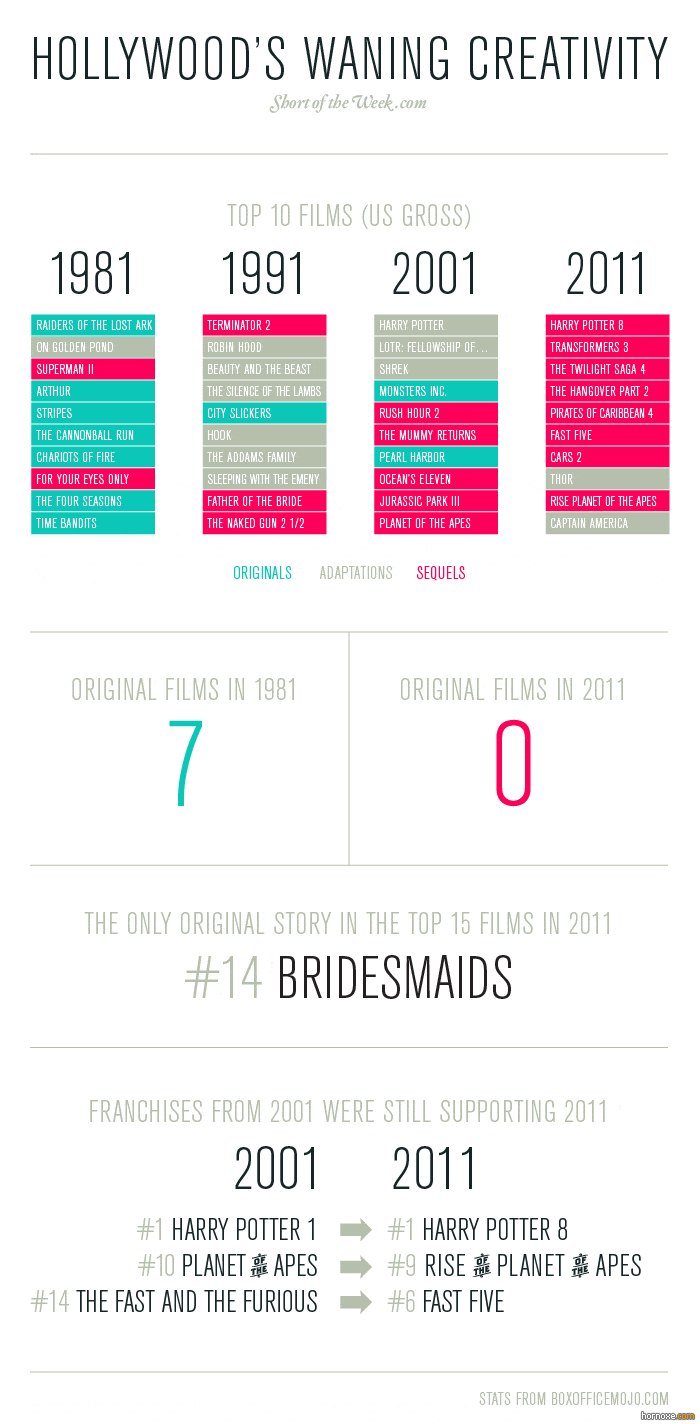I think the two differences are:
1) The technological argument that many people make about modern CG, virtual sets, and digital body-doubles versus animatronics, mattes, and other "real-world" effects; also, the argument the author makes about how commercial and music video directing has influenced blockbuster films.
2) The proportion of films that fit into the category. You identify 1978.
In 1978, these were the top films: Grease, Superman, Animal House, Every Which Way But Loose, Heaven Can Wait, Hooper, Jaws 2, Halloween, Dawn of the Dead, The Deer Hunter. I see two sequels and two adaptations, but 6 originals--and I see films targeted towards families, teenagers, and adults. I see comedies, action films, dramas, films with strong adventure elements, horror...
In 2012, these have been the top films: Avengers (teen targeted adaptation action-superhero-adventure), Dark Knight Rises (teen targeted sequel/adaptation action-superhero-adventure), The Hunger Games (teen targeted adaptation action-adventure), Amazing Spiderman (teen targeted sequel/adaptation action-superhero-adventure), Brave (family targeted animated adventure), Ted (teen-young adult targeted raunch comedy), Madagascar 3 (family targeted sequel animated adventure), The Lorax (family targeted adaptation animated adventure), MIB3 (family targeted sequel sci-fi-adventure), Ice Age 4 (family targeted sequel animated adventure)--would you agree that the top 10 certainly has more franchises, less variety in movie type (only Ted is really in a non-adventure genre), budgets, target audiences, etc?


